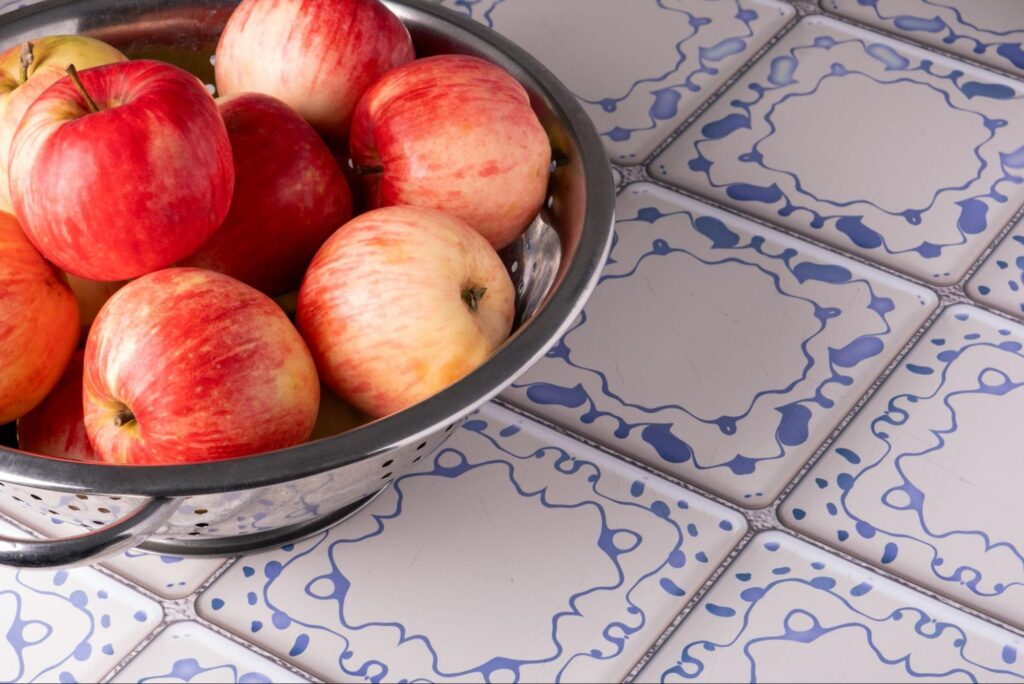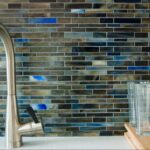
What to Consider When Choosing Kitchen Tile
A great kitchen works hard. The right tile shrugs off splashes and foot traffic, ties your design together, and saves you time on upkeep. Choosing well means balancing form and function across material, size, finish, color, grout, installation, and budget. Use this guide to make confident choices that fit how you actually cook, clean, and live.
Kitchen Tile and Your Lifestyle
Before you compare samples, think about daily reality. Do you cook most nights, host on weekends, or mostly reheat and run? If you’re simmering sauces and baking often, prioritize durability, stain resistance, and easy wipe-down surfaces for walls and floors. If your household includes kids or pets, choose slip-resistant textures and mid-tone colors that hide crumbs between cleanings. Open-concept spaces benefit from kitchen tile that visually links the kitchen with adjacent rooms; consistent tones or repeating shapes create flow without looking matchy. Start with your habits, then let style follow—your tile will feel custom because it’s chosen for your life.
Kitchen Tile Materials
Each material offers a distinct balance of strength, maintenance, and cost. A short overview helps you narrow fast.
Porcelain
Porcelain is dense, low-porosity, and highly resistant to scratches and stains. It handles busy floors and backsplashes near cooktops with ease. Because many porcelain lines mimic stone or terrazzo convincingly, you can get an elevated style without the sealing regimen natural stone requires.
Ceramic
Ceramic offers abundant sizes, colors, and handmade looks at approachable prices. It’s excellent for backsplashes and light-to-moderate traffic floors when rated accordingly. Expect slightly higher water absorption than porcelain; use on floors only when the tile’s specifications say it’s suitable.
Natural Stone
Marble, limestone, slate, and travertine bring depth and variation that no print can fully replicate. Stone needs sealing and pH-neutral cleaners, and some varieties etch or patina. If you love organic movement and don’t mind gentle upkeep, stone delivers timeless warmth.
Glass
Glass throws light around a room, making smaller kitchens feel more open. It’s a backsplash star—not a floor choice—thanks to its glossy surface and potential to scratch. Use clear or frosted glass as an accent band, niche, or feature wall behind a range hood for a clean, contemporary lift.
Kitchen Tile Sizes and Layouts: Scale Shapes the Space
The size of your kitchen tile affects how large or calm the room feels, and the layout pattern changes the mood.
Large-Format Tile
Tiles 12×24 and up make floors look expansive and modern while reducing grout maintenance. Proper subfloor prep is essential so that large tiles sit flat. On walls, large rectangles create sleek, spa-like backsplashes with minimal visual breaks.
Subway Tile
Classic 3×6 has staying power, but you can refresh it by choosing longer planks (e.g., 2×10, 2×12) or stacking them vertically for a more modern look. Laying subway Kitchen Tile in a herringbone or double-herringbone pattern adds movement without feeling busy.
Mosaic Tile
Sheets of penny rounds, hexes, or small squares wrap gently over curves (great for a breakfast bar face) and provide natural slip resistance on floors because of extra grout. Keep colors restrained to avoid visual clutter in compact kitchens.
Kitchen Tile Durability and Ratings
Beyond looks, check the performance line items. For floors, use kitchen tile with a wear rating appropriate for residential heavy traffic; denser bodies resist chipping from dropped pans. Look for slip-resistance values (often given as a coefficient or class) that make sense for a room that sees water and oil. On walls, weight per square foot and recommended substrate matter more than abrasion ratings. Glazed surfaces clean easily; matte finishes conceal smudges. If your kitchen opens to a patio, consider frost-rated porcelain near the threshold to handle temperature swings and tracked grit.
Kitchen Tile for Floors vs. Backsplashes
Floors take kinetic abuse; walls take heat and splatter. Choose accordingly so each surface excels at its job.
Floor Kitchen Tile that’s tougher underfoot
Pick thicker, denser tiles with robust edges and slip-friendly textures. Slight surface variation or a soft satin finish disguises crumbs until you sweep. Dark grout keeps seams crisp and low-maintenance in high-traffic zones.
Backsplash Kitchen Tile as your design canvas
Because backsplashes avoid foot traffic, you can indulge in handmade-look ceramic, high-gloss glass, or intricate mosaics. A distinctive backsplash pattern can carry the entire design even when the cabinets are simple.
Heat and cleaning considerations for wall Kitchen Tile
Behind ranges, prioritize tiles rated for heat exposure and pair them with a grout designed to resist staining. Smooth, non-craze glazes wipe clean quickly; heavily crackled glazes are beautiful but demand careful sealing and gentle cleaners.
Kitchen Tile Color, Pattern, and Grout
Color sets the mood; grout outlines the shape; pattern controls energy. The interplay makes kitchen tile feel calm or kinetic, airy or cozy.
Mid-Tones and Layered Neutrals
Greige, soft taupe, and muted stone hues hide daily dust better than pure white or near-black. Layering two related tones—say, warm gray floors with a creamy backsplash—creates depth that ages gracefully.
Pattern
Bold motifs are fantastic as accents, but can exhaust small rooms. Use larger patterns on a single feature area and keep the rest quiet. In big kitchens, repeating geometric layouts add rhythm without overwhelming.
Grout Color
Matching grout to tile blends seams for a seamless field; contrasting grout highlights geometry and adds graphic punch. For practicality, select stain-resistant or epoxy grout near cooktops and sinks.
Kitchen Tile Installation and Prep
Even the best tile fails without a solid foundation. Floors need a flat, properly supported subfloor and, often, an underlayment or uncoupling membrane to limit movement that causes cracks. Wet areas benefit from waterproofing membranes on walls before installing kitchen tile. Expansion and movement joints at perimeters and transitions prevent telegraphed cracks as your home expands and contracts. On walls, accurate layout lines keep patterns level across outlets, windows, and the range hood. Hire an installer who measures twice, plans cuts in low-visibility areas, and understands the technical specs on your chosen tile and grout system.
Kitchen Tile Budget and Total Cost of Ownership
Material price is just the start. Larger tiles may cost more to cut and set, but reduce grout upkeep. Intricate mosaics can be inexpensive per sheet, yet they take longer to install, thereby increasing labor costs. Factor in setting materials, waterproofing membranes, edge trims, sealing for stone or crackled glazes, and potential subfloor prep. Over time, denser porcelain and properly sealed stone may cost less in maintenance than softer, high-absorption surfaces. A realistic budget accounts for a 10–15% overage to cover cuts and future repairs, so you can stash matching kitchen tile for down-the-road touch-ups.
Kitchen Tile Maintenance and Longevity: Keep It Looking New
A quality care plan preserves color and texture while saving you time.
Routine Cleaning
Sweep or vacuum grit weekly to prevent micro-abrasion, then mop with a mild, pH-neutral cleaner. Avoid oil soaps and harsh acids that can dull glazes or etch stone. Quick daily wipe-downs around the cooktop stop stains before they set.
Sealing
Natural stone and some crackle-glaze ceramics benefit from penetrating sealers. Follow the manufacturer’s schedule—often annually for heavy-use zones—to maintain stain resistance without altering sheen.
Planning for Repairs
Keep a labeled box of extra tiles and grout from the original batch. If a piece chips or a line cracks, you can swap seamlessly. This foresight makes minor fixes inexpensive and nearly invisible.

Kitchen Tile Design Cohesion
Because kitchens have many hard surfaces, aim for harmony across them. If your countertop features bold veining, consider letting the backsplash take a quieter approach, perhaps with a soft field tile or a simple stacked layout. If the counters are understated, a patterned kitchen tile can become the star. Repeat one element—tone, finish, or shape—across floor and wall to create a through-line, but vary the scale so the room doesn’t feel flat. Metallic fixtures and cabinet hardware then act like jewelry, finishing the composition without competing with the tile.
Kitchen Tile for Small Kitchens, Large Kitchens, and Open Plans
Room size changes what works best. In compact spaces, vertical stacks or slim planks draw the eye upward and create a taller feel; light, soft-sheen kitchen tile amplifies ambient light. In generous kitchens, large-format floors minimize seams and appear custom, while feature walls can accommodate bolder mosaics. For open plans, extend floor tile into adjacent zones or echo your backsplash color in a nearby fireplace surround to visually connect spaces without duplicating patterns.
Kitchen Tile and Sustainability: Smarter Choices for Healthier Homes
If sustainability matters to you, look for products with recycled content, responsibly sourced materials, or third-party certifications. Many porcelains include recycled material and fire at efficiencies that reduce waste. Choose grout and setting materials with low VOC ratings to support indoor air quality. Because long-lasting Kitchen Tile needs fewer replacements over decades, a durable selection is an eco-choice, too. Designing once—and designing well—is often the greenest decision you can make.
Visit our Drip Stop and Electric Pros blog to learn more style tips for your kitchen and home.
The Difference Between…
A local handyman and a licensed contractor both improve homes,…




